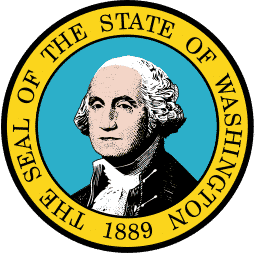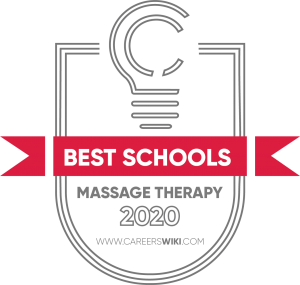…
There are nearly four dozen massage therapy schools in Washington that state authorities have approved.
Private and public schools range from small institutes to large colleges. Some are entirely focused on massage, while others offer multiple educational programs. Many award certificates that take a year or less to earn. Two-year associate degrees are available at certain schools. Curricula include classes, lab sessions, and clinical experiences.
Washington massage therapists make significantly more money than the national average. The employment prospects are outstanding. Government officials expect 1,600 annual job openings in the state by 2026.
View our massage therapy schools in other states.

This agency is a division of the state Department of Health. Its mission is “to protect the public’s health and safety, and to promote the welfare of the state by regulating the competency and quality of professional healthcare providers.”
The board licenses massage therapists. It establishes educational, training, and exam requirements for licensure; approves schools that offer programs meeting curricular and faculty standards; and investigates complaints about schools and practitioners. The officials take disciplinary action ranging from fines to license suspension or revocation.
The board has four members, three of whom are licensed MTs with at least three years’ experience in the state. The other member represents the public.
To become a massage therapist in Washington, the first step is to graduate from high school with acceptable grades or earn a GED. A student then needs to enroll in an accredited postsecondary institution with a state-approved MT program.
The Department of Health requires curricula to consist of 500 or more clock hours. Approved programs, which take at least six months to complete, feature at least:
Another 55 hours must teach clinical and business practices such as medical terminology, hygiene, recordkeeping, client interactions, and state and local laws.
The remainder of the coursework is at the discretion of schools. Programs vary in the massage techniques and other therapeutic methods they teach. Most have classes in Eastern and Western modalities.
Graduates apply to the Department of Health for licensure. The process involves passing the Massage and Bodywork Licensing Examination (MBLEx). The test contains 100 questions about assessing clients, developing treatment plans, massage benefits, pathology, contraindications, treatments for special populations, laws, and ethics. Applicants apply online to the Federation of State Massage Therapy Boards to take the exam.
License renewals are required every year. Every two years, they receive 24 hours of continuing education — including eight hours of “direct massage skills training” and four hours of ethics, laws, and regulations.
Those who intend to practice only reflexology may earn state credentials by completing approved 200-hour educational programs and passing the MBLEx.
We selected the schools below based on the programs that they offer, accreditation, student population, graduation rate and reputation.
View our Ranking Methodology to learn more about how we rank schools.

NA
113
This Yakima school offers two certificate programs far exceeding the 500 clock hours that state officials require.
A 750-hour program meets the criteria for recognition by the National Certification Board of Therapeutic Massage and Bodywork. It entails 10 months of full-time study (30 hours per week). The 650-hour alternative is part time (20 hours per week) for about a year.
Both programs involve the mandated courses, plus Palpation, Joint Function, Swedish Massage, Variation, Remedial, Body Mechanics, Hydrotherapy, and Terminology. Students perform 50 hours of clinical work, and take a field trip to the cadaver lab at Central Washington University.
65%
29
Founded in 1986 in Spokane, this is the oldest massage therapy school in the inland Northwest.
The 12-month, 750-hour MT program features the state-required courses plus Hydrotherapy, Reflexology, Acupressure, Trigger Point Therapy, Spa Treatments, Neuromuscular Therapy, Aromatherapy, Cranial Sacral Therapy, and Myofascial Techniques. Students also take classes in Swedish, infant/prenatal, on-site, lymphatic, sports, orthopedic, and cancer care massage.
The school has a cadaver lab where students view bodies in various degrees of dissection. Program participants administer 50-minute massages in a student clinic, and also practice their techniques at facilities in the community.
92%
75
This private school in Kennewick offers six certificate programs, including a 750-hour massage therapy curriculum that takes just eight months to complete.
Students learn these massage techniques: therapeutic, deep tissue, trigger point, Thai and Oriental, stone, elderly, pregnancy, infant, chair, and sports. Along with the mandated coursework, classes cover hydrotherapy, reflexology, aromatherapy, acupressure, Shiatsu, yoga, polarity, lymphatic drainage, myofascial release, neuromuscular therapy, EFT emotional release, nutrition, human behavior, and client interaction.
The school accepts high school graduates as young as 16 years of age. The massage program classroom has 15 beds in individual cubicles, and there is a student clinic.
75%
119
The company that owns this school has campuses in a number of states, including one on Pontius Avenue North.
Students can earn MT certificates in as little as seven and a half months. There are two options for the 815.5-hour, 53-credit program: day classes for 32 weeks or evening classes for 52 weeks. Students may take longer, but they must attend school at least half-time.
Among the required courses are Hydrotherapy & Spa Preparation,, Acupressure & Eastern Theories, Craniosacral Massage, Reflexology, Russian Sports Massage, Trigger Point Therapy & Techniques, and Shiatsu. Students take part in several internships.
79%
337
This school has 19 campuses in six Western states. Six of the sites, including the one just north of Spokane, offer a certificate program in massage therapy.
The program, which consists of 765 hours and 35 credits, takes about nine months. Students learn Swedish, sports, deep tissue, and chair massage; as well as Shiatsu and dry-room spa techniques. In addition to the state-required courses, classes cover communication skills, practice management, and success skills.
General education requirements and a career development seminar are available online. The program can be part of a Carrington associate of science (AS) degree in health studies.
33%
4263
This public school in Bellingham has a 60-credit certificate program that extends through three quarters.
Fifteen of the credits are in general education classes: Business Math, English Composition, Introduction to Communications, Interpersonal Communication, Small Group Communication, and Introduction to Organizational Communication. Eight hybrid courses involve online lectures and in-person labs. Students average 20 hours per week outside of class doing homework. They get practical experience at an on-campus clinic.
The program enrolls 18 students each year on a first-come, first-served basis. More than 90 percent of graduates pass the licensure exam, exceeding the national average by about 20 points.
41%
3905
Students at this public community college, founded in 1942, attend classes on the South Hill campus, about a mile outside Lakewood.
There are three massage therapy options. The 41-credit clinical massage practitioner and 44-credit Swedish massage practitioner certificate programs provide all state-required courses. Students learn clinical, pregnancy, sports and chair massage; plus myofascial release, lymphatic drainage, hydrotherapy, and mini-spa applications.
The 103-credit associate of applied technology program adds classes in composition, psychology, communications, social science, quantitative reasoning, and social sciences. Business courses teach professional ethics, goal setting, insurance billing, marketing, resume writing, and interviewing.
57%
3546
This award-winning community college, in a Seattle suburb, offers a pair of programs.
The school awards massage practitioner certificates to those who complete 50 credits in three quarters. At an on-campus clinic, students perform Swedish, deep tissue, pregnancy, hot stone, and sports massages; as well as acupressure and myofascial release treatments.
An associate of applied science degree in MT consists of 90 credits over five quarters. There are general education requirements in math, communications, composition, psychology, and nutrition. Electives include Holistic Self-Care for Massage Therapists, Massage Business Start-Up, Asian Body Modalities, and Integrative Massage.
$30
$63,700
54%
The average practitioner in this state makes an annual salary of more than $63,700 or an hourly wage of over $30.60 — much better than the national median of over $41,400 a year or about $20 per hour.
The top 10 percent of Washington massage therapists receive almost $82,400 or about $39,60, more than the national average of around $78,300 or $37.75. For the bottom 10 percent, the pay is about $38,300 or nearly $18.50 in the state, compared with around $21,350 or $10.25 nationally.
There were 8,820 practitioners in the Evergreen State in 2016, according to the U.S. Bureau of Labor Statistics. The agency predicts that the number will rise to 13,540 by 2026 — a whopping 54 percent job-growth rate, more than twice as fast as the projected national median of 26 percent.
Sources: U.S. Bureau of Labor Statistics, CareerOneStop

LIMITED TIME DEAL